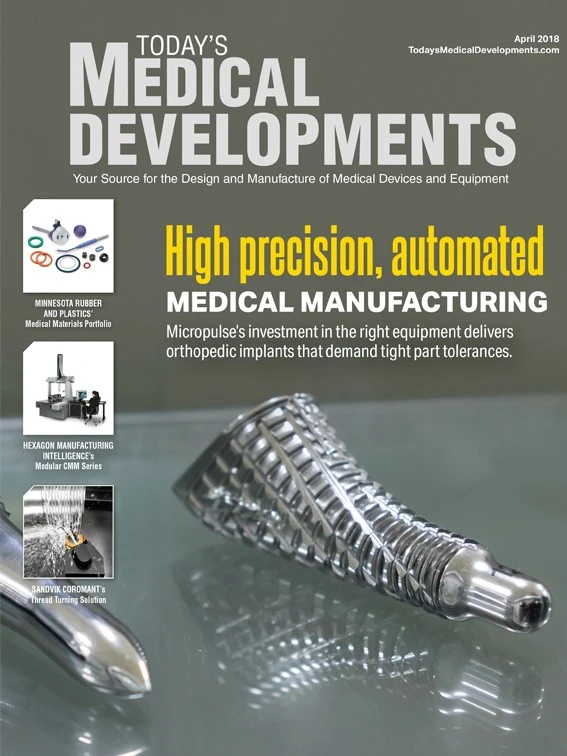
My husband and I are huge “Survivor” show fans. We’ve been watching since our daughter was 3 weeks old; she graduates high school next month. Now in its 36th season, this reality show (really, it’s a social experiment) has contestants constantly in competition and collaboration to see who can “Outwit, Outplay, and Outlast” to be the sole survivor and win $1 million. And there’s always a twist. This season it’s Ghost Island, home to lost advantages from past seasons that could have helped a player get farther in the game, but one bad decision was game-ending for them. Players cast away to Ghost Island have a chance to acquire a lost advantage and, hopefully, make a good decision this time.
While there’s competition in medical device manufacturing, it also has, and needs, collaboration. Take, for example, Micropulse Inc. Founded in 1988 by Brian Emerick in his garage with one machine, by 2003 the company was manufacturing parts for a range of industries under the plan: buy a machine, get work, hire some people, and repeat. While perhaps not a bad decision – since it got the company up and running – as some segments began to slow Emerick made the tough, but good decision, to narrow the company’s focus and concentrate on orthopedic devices.
By 2010, tax cuts and matching funding had helped the company nearly double its size to 100,000ft2. In 2013 it was announced the company would invest $14.3 million to renovate its current facility, invest in new equipment, and add an additional 60,000ft2. Then in late 2017, company officials announced another $5.5 million to increase its machining and inspection capacity. Amid these continuing company expansions, Emerick started dabbling in incubation.
The result was the opening of the Micropulse OrthoVation Center in 2010. Emerick’s aim for this in-house incubator was to establish Whitley County, Indiana, as a center of excellence for product development, innovation, and commercialization for start-up orthopedic companies.
It’s working. One recent tenant, Restoration Medical Polymers (RMP), opened its new 36,000ft2 facility not far from Micropulse, and fabricates forms of ultra-high molecular weight polyethylene (UHMWPE) used in long-term human implantable applications, especially orthopedics. (Read more in this month’s Motion Engineering + Design section.)
Today, Emerick attributes automation, earned trust, and integrity as what enables Micropulse to provide quality parts, delivered quickly and at competitive prices – this month’s cover story. But it was also that one good decision that changed the course of the company, opening up more possibilities, such as his incubation program.
It’s also a great lesson for any manufacturer looking to grow leaner or narrow their focus to become the expert in what they do.
What was that one bad good decision that has changed the direction of your company?
Elizabeth Engler Modic, Editor
emodic@gie.net

Explore the April 2018 Issue
Check out more from this issue and find your next story to read.
Latest from Today's Medical Developments
- Roundup of some news hires around the manufacturing industry
- Mazak’s INTEGREX j-Series NEO Machines
- The Association for Advancing Automation (A3) releases vision for a U.S. national robotics strategy
- Mitutoyo America’s SJ-220 Surftest
- #56 - Manufacturing Matters - How Robotics and Automation are Transforming Manufacturing
- STUDER looks back on a solid 2024 financial year
- HANNOVER MESSE 2025: Tailwind for industry
- Find out the latest developments in tool path strategies for machining





